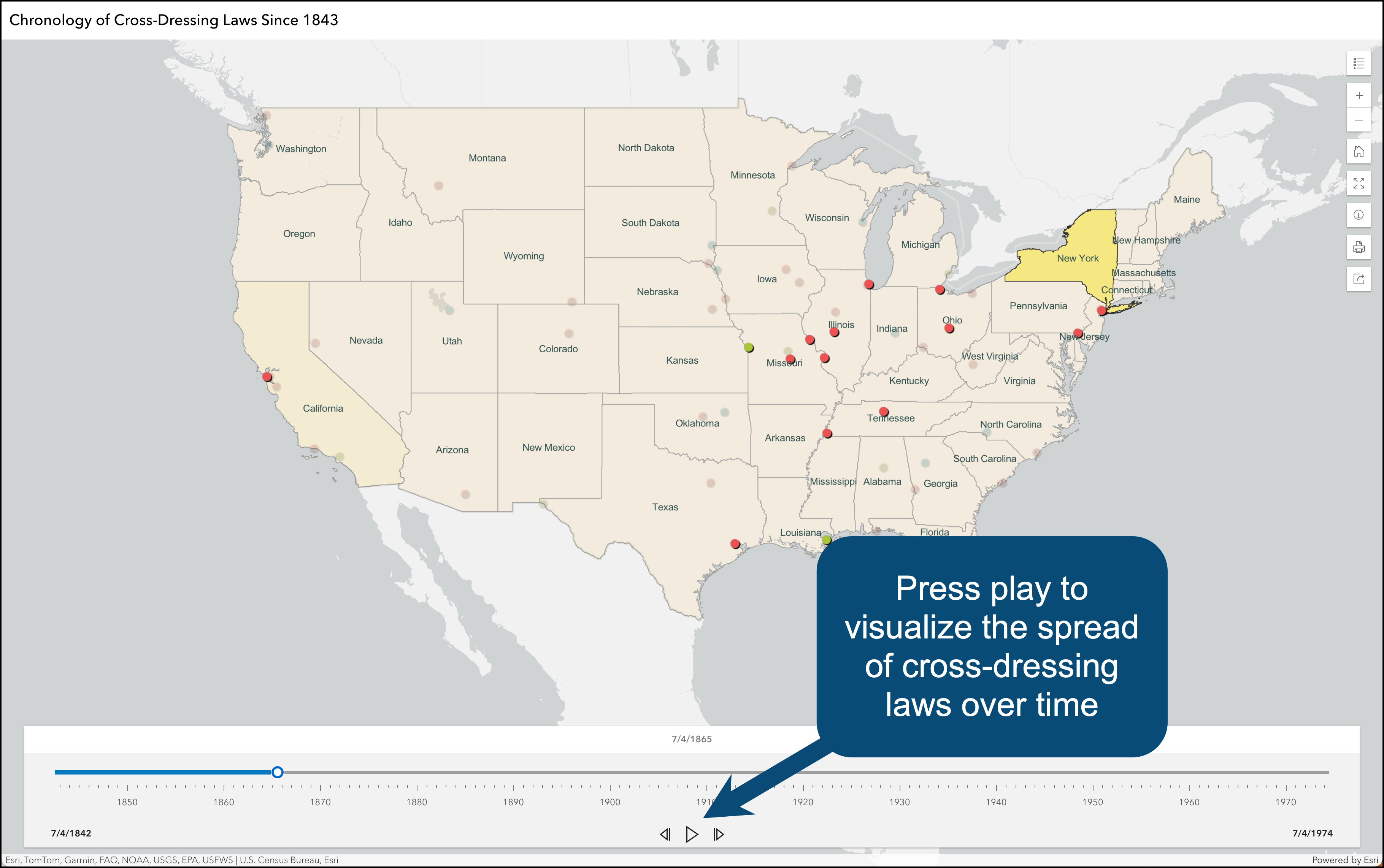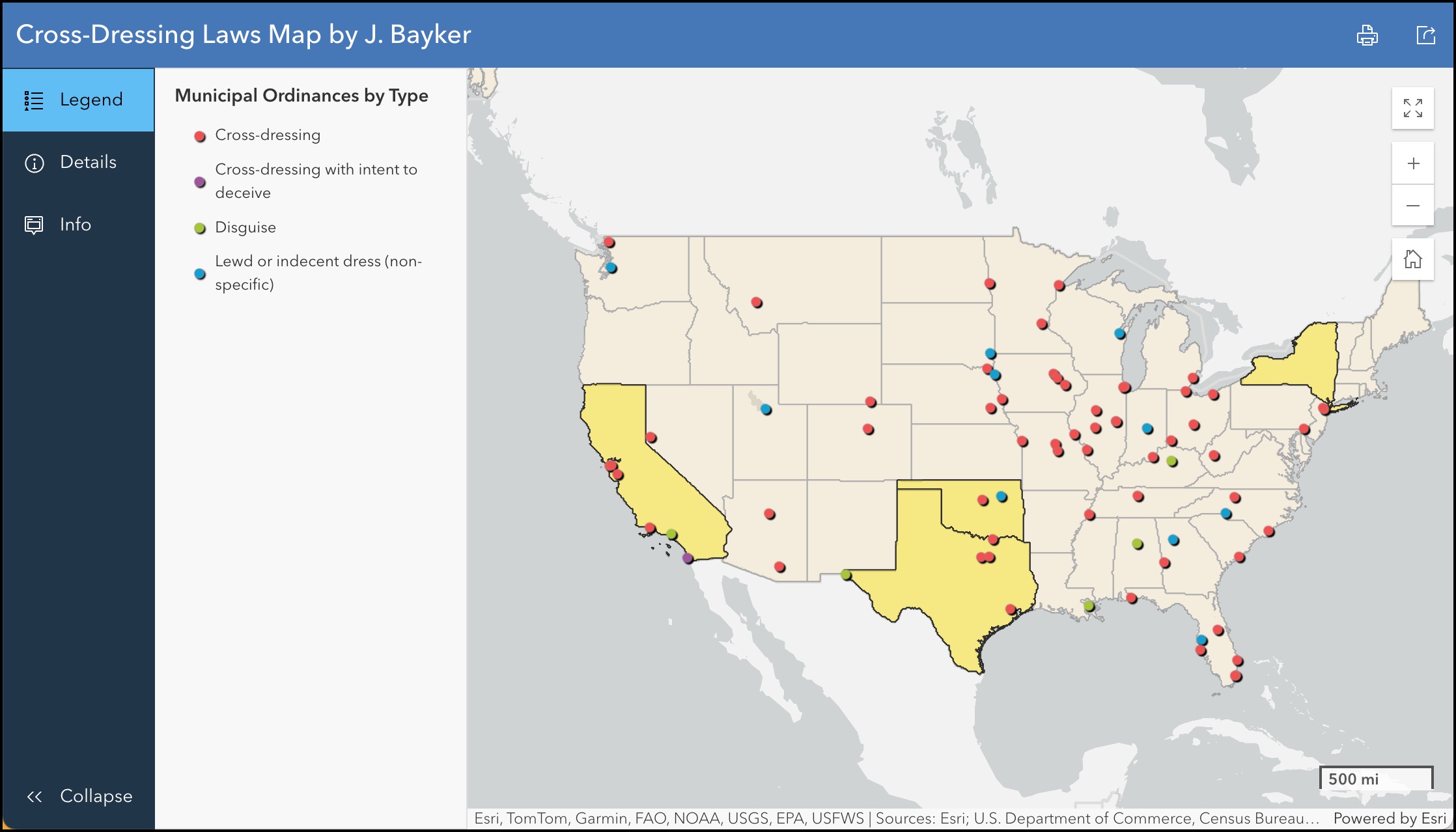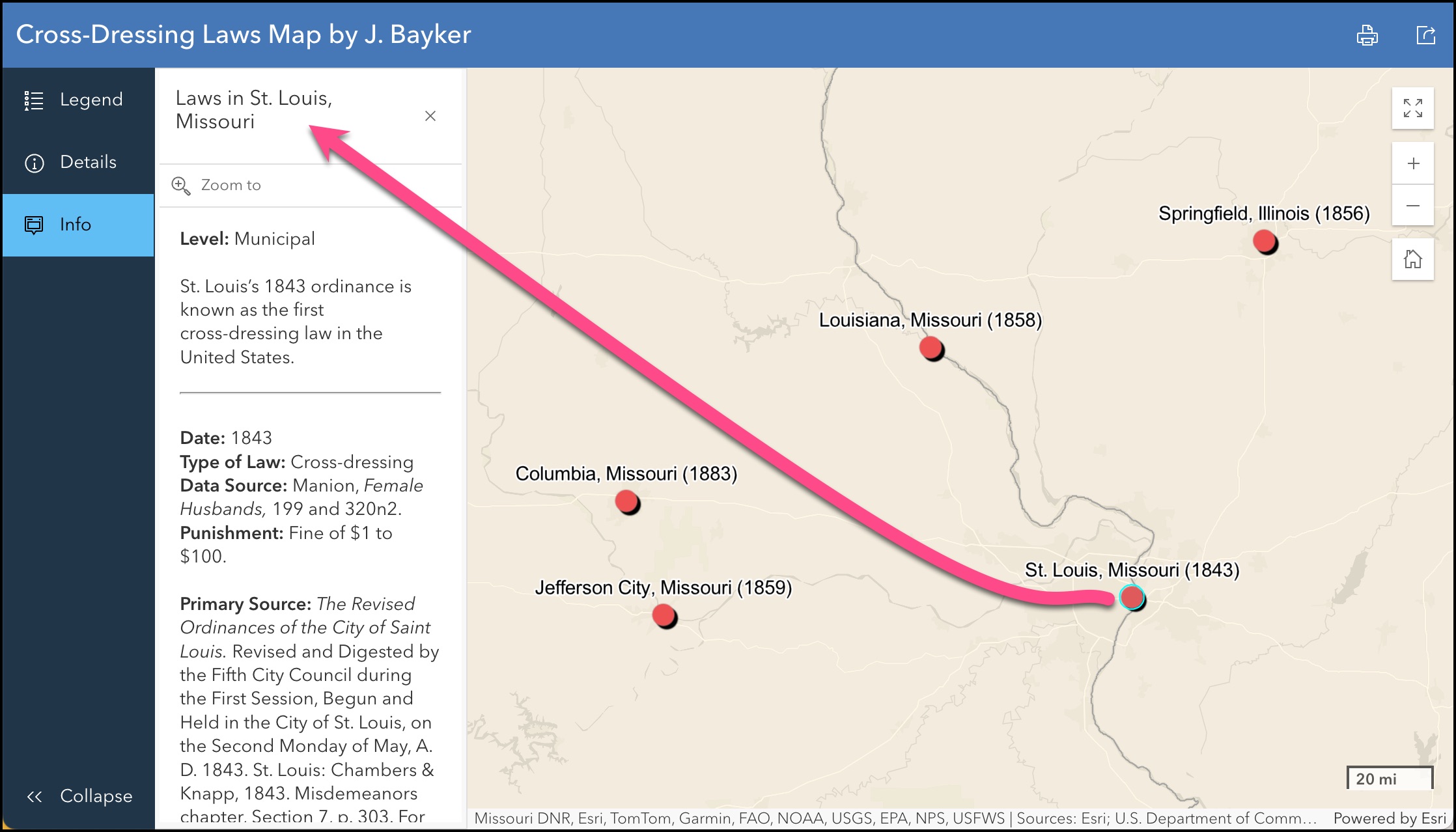digital history project by Jesse Bayker
The Cross-Dressing Laws Map highlights municipal ordinances and state laws that were used to police trans people and other gender nonconformists in the United States since the 1840s.
In 1843, St. Louis, Missouri, became the first city to adopt a decency law that prohibited people from appearing in public “in a dress not belonging to their sex.” The law categorized public cross-dressing as a “lewd” form of dress on par with public nudity. Such laws spread to cities across the country and shaped urban policing practices for over a hundred years. In the late 1960s, the contemporary LGBT legal movement began dismantling these laws.
The map tracks several types of municipal ordinances:
- Red dots indicate cross-dressing laws. Most of these ordinances prohibited public appearance “in a dress not belonging to his or her sex” regardless of intent. However, some cities specifically prohibited cross-dressing “with intent to deceive or commit a criminal act.” Purple dots highlight several 20th-century ordinances that are known to include language about deception and criminal intent. It is possible that some of the other (red) cities also added language about criminal intent to their cross-dressing ordinances at some point. Additional research is necessary to track the spread of these criminal intent clauses.
- Green dots indicate laws prohibiting public disguise. Such laws did not necessarily mention gendered modes of dress, but police sometimes used these laws to arrest trans people.
- Blue dots indicate laws that prohibited lewd or indecent dress, but did not contain an explicit cross-dressing clause. Vague in their description of indecent dress, these laws gave police officers and judges broad leeway in interpreting what clothing was considered lewd. On one hand, even though they did not mention cross-dressing, such laws were nonetheless sometimes used to punish people for their unorthodox gender presentation. On the other hand, the language of these laws provides evidence that some local councils chose to avoid the cross-dressing clause that was becoming widespread in other cities. This may suggest that some cities were reluctant to regulate gendered modes of dress and to criminalize all forms of cross-dressing.
State laws that prohibited “disguise” or “masquerade” are also highlighted on the map because they were used to regulate people’s public gender presentation.
When available, the pop-up for the location provides additional information (such as the punishment for breaking the law) and links to sources.
There are two versions of the map that offer different features: a data map and a time-lapse map.
Cross-Dressing Laws Data Map
The main digital map provides an easy way to see data about specific cities and states. Zoom in to see the names of cities and the earliest date when the law is known to be on the books. Click on a colored dot to see information and citations related to that location.
Time-Lapse Map:
Chronology of Cross-Dressing Laws Since 1843
The time-lapse map helps you visualize the spread of municipal ordinances and state laws related to cross-dressing and disguise. Press play to see 130 years of laws in 30 seconds. Press pause or drag the slider along the timeline to see the extent of cross-dressing bans at a specific point in time.
Only laws with a known (or at least approximate) starting date are shown on the time-lapse map. There are several additional cities that evidently had cross-dressing ordinances on the books in the 1960s and 1970s, but their starting dates have not been identified yet. These laws with unknown starting dates are excluded from the time-lapse map, but they can be seen on the main data map.


